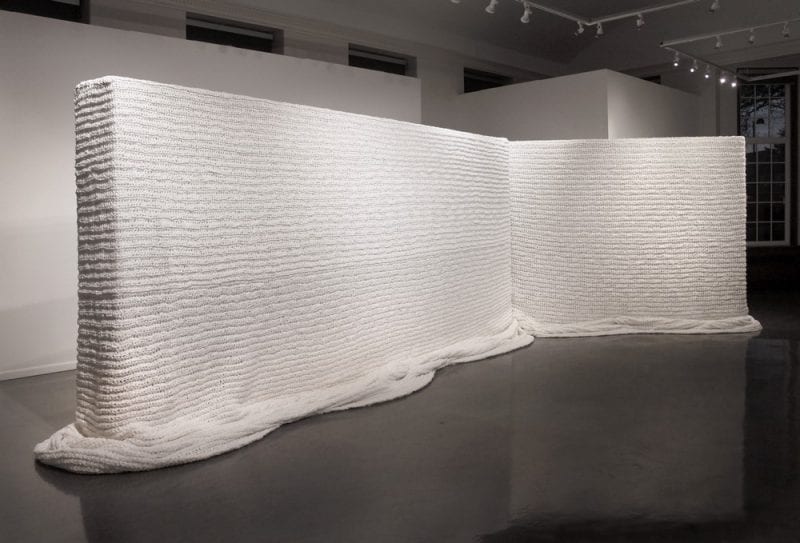Meet Akiko Kotani
The work of fiber artist Akiko Kotani manifests a remarkable distillation of diverse influences and sources of inspiration; filtered through her own finely tuned sensibility about the medium in which she works. She has aligned the structural imperatives of weaving and needlework–fiber crossing fiber, stitch following stitch–with the also-enduring tradition of drawing, so often a celebration of line in another form. From an unconventional joining of material and process, Kotani has created a highly personal language of mark making, spare and subtle, opening passages of silent space in which to breathe meditate and hear the poetry of nature.
Kotani, born in 1940 in Honolulu, received her BFA in Painting in 1962 from the University of Hawaii. A growing interest in fiber, inspired initially by her mother who was never without some form of handwork, took her in two very different directions. She worked for two years with a Mayan Indian weaver in Guatemala, and subsequently studied at the Tyler School of Art in Philadelphia, where she earned her MFA in 1977. Kotani is now Professor Emerita of Art at Slippery Rock University in western Pennsylvania, whose faculty she joined in 1979.
She has remained responsive to cross-cultural points of view, finding, for example, an affinity between the Bauhaus aesthetic with its emphasis on essential forms and the spirit of Buddhism that is part of her own cultural heritage. Kotani made an extensive study of the scratched bark drawings of the women of the Mbuti, a pygmy tribe living in the Ituri rainforest of the Congo. These drawings provided further insight into the ways in which one might combine representation and abstraction. Her own drawings based on these works led to the set of variations Black on White (#1-8), a series of stitched drawings exploring the permutations of line and circle in complex networks of connection. Kotani also remains attentive to the phenomena of the environment, from the intimate space of her studio in winter (as in the delightfully wry Pollen in Winter, inspired by the studio’s ambient dust), to the unleashed energies of nature at work on a grand scale. Kotani’s works in this scale include Andes I, a recollection of the aerial panorama seen on a flight over the mountainous topography of Peru, and Storm-Daniel, inspired both by images of the hurricane that hit the Hawaiian islands in 2000 and by her own reflections on human frailty and the fearsome beauty of nature. Where Kotani had traditionally woven the canvas backings of wool or silk for earlier work, her use of linen scrim (used for theater sets) here provides the opportunity to work on a substantially expanded scale.



